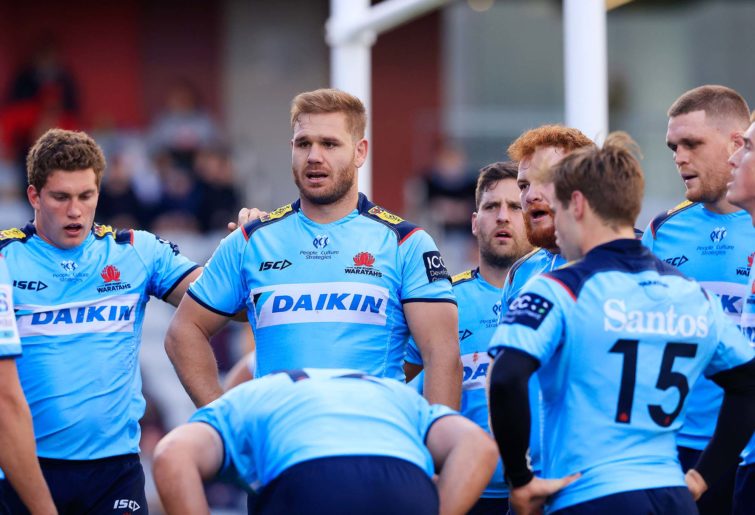The last 20 years of Super Rugby have demonstrated two inarguable facts:
1. The ability of the New Zealand rugby system to develop All Blacks is unparalleled across the rugby world.
2. Super Rugby has been a financial failure for South Africa and Australia, and the writing is on the wall for New Zealand if they don’t take heed of what has happened to their southern hemisphere partners.
Clearly Super Rugby, and in particular New Zealand Rugby, must find a way to balance these two facts.
The threat
The gloomiest outlook for southern hemisphere rugby is that Australia is the next domino to fall, with domestic rugby becoming a second-tier competition for talent not wanted by NRL teams, and getting regularly flogged by their cousins over the ditch. New Zealand being the last domino, losing players to the dual threats of cashed-up northern hemisphere rugby (the Springbok model) or an expanded NRL with two teams based in New Zealand (the Australian model).
It is important to consider that the NRL is highly likely to introduce a second New Zealand team in the next five years, and having two NRL teams both with double the salary cap of the Super Rugby teams respectively means New Zealand rugby might start to see more of the player drain that Australia currently has with its schoolboy talent. Remember 20 years ago the Wallabies were the best in the world and were higher-paid than NRL players, so it’s not impossible that it happens to New Zealand too.

(Photo by Albert Perez/Getty Images)
The solution
Super Rugby must act now and become a true club-focused competition to survive in an increasingly competitive sporting landscape. Clubs must have equal salary caps across the competition and shared broadcast revenue with the ability to sign players from any nation. Allow opening the clubs up to private ownership where possible – à la the Western Force – tempered with an NBA-style luxury tax that allows teams to go over the salary cap with a percentage of the excess redistributed to the other teams.
Of course, the above scenario would be instantly shot down, and deservedly so, by New Zealand Rugby – the greatest rugby system of the professional era should not have to give away all its advantages. However, a compromise is possible. New Zealand has the strongest foundation of amateur and schoolboy rugby, and with an overhaul of the professional game will continue to dominate the international scene within a financially sustainable Super Rugby competition.
Allow each national union 30-40 central contracts to keep top-tier and developing players in their respective nations. Meanwhile, allow fringe international players and the true club-level players to play for whoever is willing to pay them the most. Crucially, these players must maintain their international eligibility and be rewarded for improvements in form with international call-ups.
The respective unions must recognise the clubs’ role in developing previously unrecognised players, and allow them to stay at their respective Super Rugby clubs with rewards for form. New Zealand and Australia need to acknowledge that it is better for talent to remain both internationally eligible within the Super Rugby system, rather than lost overseas.
Also, clubs should be rewarded for developing international talent that has slipped through the cracks of the traditional pathways to Test rugby selection, and be able to keep said players.
Finally, having moved towards a balanced and competitive competition, Super Rugby must focus on increasing viewership, both in person and on TV. This requires two approaches.

(Photo by Mark Evans/Getty Images)
Increased broadcasting revenue may be achieved by introducing the top Japanese teams as a third conference. The South African shift to Europe has shown that timezones are more important than geography, and the Japanese market is perfectly situated as a target for growth within the correct time zone, and is an economic powerhouse that needs the powerhouse talent of New Zealand and Australian rugby talent stars to be unlocked.
Providing seven or eight competitive matches within prime time television viewing is an easy sell for broadcasters, and a four-fold increase in content in comparison to two matches a weekend as seen respectively in Super Rugby Australia and Aotearoa.
Secondly, although economically minor in comparison to TV rights, in-person attendance is the true heart of any sporting competition. What Super Rugby Australian and Aoteroa has shown is that fans respond to local derbies. Kids need to see their sporting heroes live. These matches should be maximised through the competition structure.
I propose a three-conference system (Japan, Australia and New Zealand), with each respective conference playing two home-and-away fixtures within themselves, and a single fixture against the other conference clubs, alternating home-and-away games on a two-year basis.
Importantly, there should be a single competition ladder – providing two key benefits over previous systems.
1. Weaker conferences will receive a small competitive advantage by playing more games within themselves and ensuring all conferences have a chance to be represented during finals footy.
2. Truly dire teams will not be granted a sympathy top-three finals spot, purely for finishing on top of a bad conference, they must still be competitive against the other conferences for a top-three finish.
I know the ideological purists will be against anything that is not a true home-and-away round-robin schedule, and in an ideal world they would have it their way. However a compromise is needed to balance a packed international schedule, the need for local derbies and player welfare requirements – given the brutal reality of professional rugby, a jam-packed schedule as seen in European club football is just not realistic.
Finally, the makeup of the conferences. Financial sustainability must be a priority. The competition should start with five teams in each respective conference, with a five-year plan for expansion to six teams around the time of the 2027 Rugby World Cup, to be (hopefully) played in the southern hemisphere. These teams will be comprised of the current five Australian and New Zealand Super Rugby clubs and the five best suited current Japanese franchises.

(Photo by Dave Rowland/Getty Images)
Expansion is an admirable goal, however, the Super Rugby approach to expansion has been abysmal compared to other professional sporting leagues. The proposal to include the Fijian Drua and Moana Pasifika in 2022 is a pie-in-the-sky approach. Expecting Rugby Australia to pay for a Fijian team purely out of goodwill when they are already bleeding money and players is just straight up unworkable, as nice as the idea is.
Similarly with Moana Pasifika, if they are unable to select players who are eligible for All Blacks selection they will never be competitive with the New Zealand teams. And expecting top-tier Pasifika and Fijian players to reject big money in Europe to play clubs that haven’t even worked out their funding model is completely unrealistic.
Expansion should be a five-year approach, with all new clubs given an equal footing to succeed. Clearly, both the Fijian Drua and Moana Pasifika should have their development pathways located in their respective countries of origin, however, they must also be able to access top-level Super Rugby talent to provide leadership and stability while growing their own home player base.
Furthermore, the current financial state of Super Rugby does not allow for these clubs to join Super Rugby in 2022 and be financially successful.
Sports opinion delivered daily
function edmWidgetSignupEvent() {
window.roarAnalytics.customEvent({
category: ‘EDM’,
action: ‘EDM Signup’,
label: `Shortcode Widget`,
});
}
Instead, each club should be incorporated in the respective second-tier rugby competitions in Australia and New Zealand, with a five-year focus on developing player pathways to Super Rugby. Allowing for five years of growth will also provide the financial security needed, as these clubs will realistically require subsidisation from World Rugby and other Super Rugby nations to be viable.
Expansion within the Japanese conference should mirror this timeline. The sixth team could either be a sixth Japanese franchise or the return of the Argentian Jaguares, depending on the make-up of South American Rugby at said point in time. Although re-introducing the Jaguares directly contradicts my earlier argument about time zones, only 1/18 teams in the wrong time zone is sustainable and allows Super Rugby to achieve a secondary aim of growing professional rugby outside of the traditional rugby nations.
Let me know your thoughts in the comments – clearly the current set-up has not worked, and I propose this model as a financially sustainable and competitive path forward for Super Rugby while still allowing unions to focus on developing international talent.
If you’re reading this Rugby Australia, feel free to give a broke university student a job.
Original source: https://www.theroar.com.au/2021/06/25/saving-super-rugby-part-1-competitive-club-rugby/
source https://therugbystore.com.au/saving-super-rugby-part-1-competitive-club-rugby/
No comments:
Post a Comment